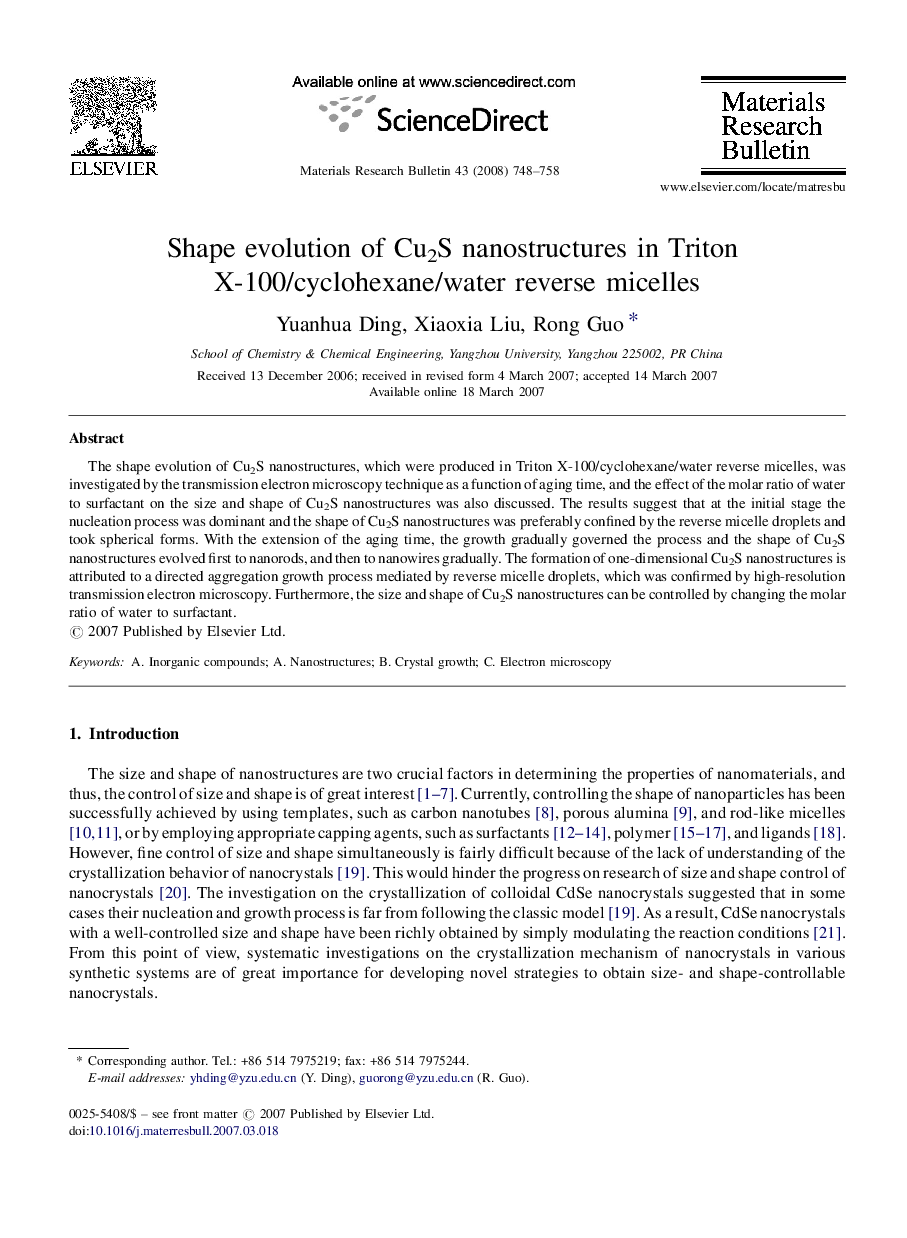| Article ID | Journal | Published Year | Pages | File Type |
|---|---|---|---|---|
| 1491569 | Materials Research Bulletin | 2008 | 11 Pages |
The shape evolution of Cu2S nanostructures, which were produced in Triton X-100/cyclohexane/water reverse micelles, was investigated by the transmission electron microscopy technique as a function of aging time, and the effect of the molar ratio of water to surfactant on the size and shape of Cu2S nanostructures was also discussed. The results suggest that at the initial stage the nucleation process was dominant and the shape of Cu2S nanostructures was preferably confined by the reverse micelle droplets and took spherical forms. With the extension of the aging time, the growth gradually governed the process and the shape of Cu2S nanostructures evolved first to nanorods, and then to nanowires gradually. The formation of one-dimensional Cu2S nanostructures is attributed to a directed aggregation growth process mediated by reverse micelle droplets, which was confirmed by high-resolution transmission electron microscopy. Furthermore, the size and shape of Cu2S nanostructures can be controlled by changing the molar ratio of water to surfactant.
